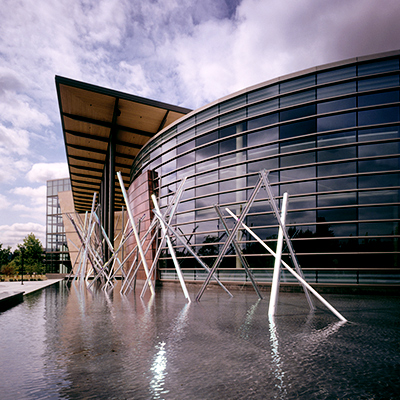Archa Is A Candidate For Being The Most Complete Architecture
The philosophy of architecture is a branch of philosophy of art, dealing with aesthetic value of architecture, its semantics and relations with development of culture. Many philosophers and theoreticians from Plato to Michel Foucault, Gilles Deleuze, Robert Venturi and Ludwig Wittgenstein have concerned themselves with the nature of architecture and whether or not architecture is distinguished from building architecture means offering or rendering professional services in connection with the design and construction of buildings, or built environments.
An Ideal Choice For Architects
Italian Mannerist architect, painter and theorist Sebastiano Serlio wrote Tutte L’Opere D’Architettura et Prospetiva Complete Works on Architecture and Perspective. This treatise exerted immense influence throughout Europe, being the first handbook that emphasized the practical rather than the theoretical aspects of architecture, and it was the first to catalog the five orders.

The Most Complete Architecture Theme
Augustus Welby Northmore Pugin wrote Contrasts 1836 that, as the titled suggested, contrasted the modern, industrial world, which he disparaged, with an idealized image of neo-medieval world. Gothic architecture, Pugin believed, was the only "true Christian form of architecture." The 19th-century English art critic, John Ruskin, in his Seven Lamps of Architecture, published 1849, was much narrower in his view of what constituted architecture.
Architecture & Interior Templats
On the difference between the ideals of architecture and mere construction, the renowned 20th-century architect Le Corbusier wrote: "You employ stone, wood, and concrete, and with these materials you build houses and palaces: that is construction. Ingenuity is at work. But suddenly you touch my heart, you do me good. I am happy and I say: This is beautiful. That is Architecture Le Corbusier's contemporary Ludwig Mies van der Rohe said Architecture.
Facility provided
Over the years, the field of architectural construction has branched out to include.
Over the years, the field of architectural construction has branched out to include.
The notable 19th-century architect of skyscrapers, Louis Sullivan, promoted an overriding precept to architectural design: "Form follows function". While the notion that structural and aesthetic considerations should be entirely subject to functionality was met with both popularity and skepticism, it had the effect of introducing the concept of "function" in place of Vitruvius' "utility". "Function" came to be seen as encompassing all criteria of the use, perception and enjoyment of a building, not only practical but also aesthetic, psychological and cultural.
In the late 20th century a new concept was added to those included in the compass of both structure and function, the consideration of sustainability, hence sustainable architecture. To satisfy the contemporary ethos a building should be constructed in a manner which is environmentally friendly.
CONSULTING
84%PLANNING
91%ARCHITECTURE
70%

Building first evolved out of the dynamics between needs shelter, security, worship, etc and means available building materials and attendant skills. As human cultures developed and knowledge began to be formalized through oral traditions and practices, building became a craft, and "architecture" is the name given to the most highly formalized and respected versions of that craft. It is widely assumed that architectural success was the product of a process of trial and error, with progressively less trial and more replication as the results.
The architecture of different parts of Asia developed along different lines from that of Europe; Buddhist, Hindu and Sikh architecture each having different characteristics. Indian and Chinese architecture have had great influence on the surrounding regions, while Japanese architecture has not. Buddhist architecture, in particular, showed great regional diversity. Hindu temple architecture, which developed from around the 5th century CE, is in theory governed by concepts laid down in the Shastras, and is concerned with expressing the macrocosm and the microcosm.



